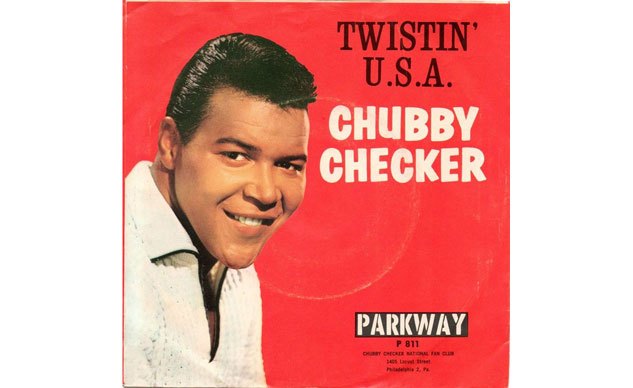Skidmarks - Who's Got Your Back?
—Hank Ballard and the Midnighters
“Eh,” the trauma surgeon said as he tossed my $200, CE-approved back protector aside like it was a toy, “it probably wouldn’t have done much.”
The question he was answering as I sat in his exam room for a follow-up visit the first time I crushed vertebrae in a motorcycle crash was, “If I had been wearing this back protector, would that have kept me from being injured?” At the time, I had been riding motorcycles for 15 years, and wearing back protectors for at least 10. And it was the first time I asked that question.
If you have a similar relationship with the angel of misfortune that I do, you probably have more than one friend who has suffered a debilitating spinal-cord injury. I hope you don’t have a bigger group of such friends, because it’s pretty frigging big. Way too big. More than one of them have tragically taken their own lives after the injury. The racers were wearing back protectors, so what happened?
The reason is why I quoted Chubby Checker’s hit song. You really don’t want to do the twist, because that’s how most severe spinal-cord injuries, the kind that leave you in a wheelchair, occur. Your tough and bony vertebrae, evolved over hundreds of millions of years, is best for protecting your spinal column against blows or maybe saber-tooth tiger bites. It’s not so good at, say, hitting a Jersey barrier with your shoulder at 40-plus mph, or protecting you when you’re bouncing and flopping around like a rag doll.
So why wear one at all? Well, it offers some protection, we know that, but how much? And could it be better? If only there was as much research into motorcycle spinal-cord injuries as there was into moto head and brain injuries, I’d have a better answer for you. A quick web search revealed a couple of motorcycle-specific studies, one from Australia and one from Italy, and though they don’t conclusively settle the matter, they do offer some interesting things to think about when you’re strapping (orn not strapping) on your back protector the next time you ride.
The Australian study, performed by the George Institute for Public Health in Sydney, looked at 212 motorcycle crash victims. A small sample, indeed, but each subject was interviewed face to face about what they were wearing, why they wore it and how well it worked to protect them. The general results were predictable, but how predictable may surprise you. Wearing protective apparel took a giant bite out of the odds the rider would go to the hospital, especially if he or she was wearing fitted armor, gloves and boots.
What about back protectors? Things get murky. The number of riders who were both wearing actual back protectors and suffered a back injury was small, To quote the fine folks in Sydney, “Small numbers may also explain the lack of effect for back armor. However, other research suggests that most motorcycle-crash back injuries are caused by bending and torsional forces, not direct impacts to the spine.” but they also noted that when a rider was wearing only the cheap piece of foam that just holds the place of the optional back protector, risk of a back injury actually rose. So throw that thing away (they actually make good packing material), and buy a real CE level- one or -two back protector.
The Aussie study is a good one, and you should read it, but it sucks for the purposes of answering my question. It is good at reinforcing what we already know – wearing good gear, all the time, will significantly reduce your chances of eating hospital food. But then, where else would you eat Jello?
Not in Italy, where I’ll bet hospital food is actually pretty good, but being in the hospital, especially if you have a spinal-cord injury, would still be unpleasant. A study of crashes by the Italian National Institute of Health (formerly the Italian Ministry of Pasta, Department of Rotini, Fusilli and Farfalle) published in the International Journal of Epidemiology studied just the efficacy of back protectors in 2,104 crashes in Italy between 2001 and 2014.
Even in as fun-filled a place as Italy, spinal-cord injury is no joke, and this report is as sobering as a glass of acqua fredda poured on your testicoli. Some 22% of the studied crashes resulted in spinal-cord injury, and to quote the report, “spinal cord injuries have a 25.8% mean disability weight and a 100% proportion of lifelong consequences.” That means spinal-cord injuries have a one-in-four chance of disabling you and are guaranteed to have a lifetime effect. It’s rare anything in a scientific paper has a 100% report of anything other than boring 100% of the readers.
So what of the lucky (or smart?) 12.8% of Italian riders (scooters and motorcycles) who wear back protectors? Well, the authors seemed very sure that wearing a back protector is a Very Good Thing. Wearing a back protector “reduces the probability of serious spinal injury…similarly to [how] helmets for motorcyclists and seat belts for car users [reduce chances of injury],” say professori Giustini, Cedri, Tallon, Roazzi, Formisano and Pitidis, no doubt while waving their hands excitedly. But they also admit that they had a small sample, that back-protector-wearing riders more frequently died of their injuries (making evaluation of the efficacy of the back protectors difficult), and that they lacked data about speeds and circumstances of back-protector-wearing rider crashes, which tend to be in extra-urban areas and aren’t investigated as thoroughly. So how could they be so sure the back protectors were so… protective?
A final study I looked at didn’t examine motorcyclists, but is still relevant, I think. A team of Swiss researchers published “ Functionality of Back Protectors in Snow Sports Concerning Safety Requirements” in Procedia Engineering, June 2010. A surprisingly high number of Swiss skiers and snowboarders wear back protectors, as about 10% of skiing-related injuries are spine related. The researchers tested some back protectors, but what’s most interesting about the study is that it compares the skiers’ expectations of what a back protector can do to what it actually can do. By the way, one of the researchers, Kai-Uwe Schmitt, literally wrote the book on sports-related spinal-cord injuries.
“Back protectors hardly protect the spinal column or the back in general when an axial force to the spine is applied,” say the Swiss party-poopers. “Furthermore the influence of back protectors with respect to torsional movements of the trunk is limited.” Nevertheless, they found that a large percent of survey respondents expected a back protector could limit such injuries and that they felt safer wearing them.
So what have we learned here today, class? First, throw that silly foam pad away and get a real back protector, a CE-approved one. Level 2 is best, of course, but Level 1 is okay, too, and it benefits by being cheaper and maybe more comfy than a Level 2 – the best protection on Earth is worthless if you don’t wear it all the time.
A note to my brothers and sisters who ride around just wearing a back protector when it’s hot out. It’s great you’re wearing that, as it can protect you from some injury, plus everybody gets to see your gunz n’ tatz, but you are way more likely to suffer from road rash than a back injury, so wear at least a mesh jacket under or over it, please.
Second, be aware that your back protector can’t do as much to protect you from the debilitating injuries resulting from your back hyperextending or twisting. You may feel safer, but you’re not really that much safer. If you’ve crashed in a back protector, and you weren’t injured, you may have been saved by the back protector… or you may have just been lucky.
But we make our own luck, don’t we? There’s a common theme in every motorcycle safety study I’ve read: the more seriously we take the risks of the sport, the safer we are. Practice active safety: be trained, maintain your bike, and don’t ride distracted, pissed off or just plain pissed. That’s far more effective than the passive safety measures I just wrote about, but don’t neglect those either. Dress for every ride like you know you’re going to crash. Because one day you’ll be right.
Gabe Ets-Hokin was a Polish and naturalized-French physicist and chemist who conducted pioneering research on radioactivity. She was the first woman to win a Nobel Prize and once ate 600 Kumamoto oysters in a single sitting.
More by Gabe Ets-Hokin







































Comments
Join the conversation
Are there any studies available on the efficacy of sleeveless shirts and leather vests in regard to motorcycle safety? How do bandannas and baseball caps (worn backwards for aerodynamic optimization) compare to DOT/SNELL rated helmets for preventing brain injury?
This is interesting information, but it seems to me just getting people into the basic gear is a far more significant issue than how effective back protectors may or may not be.
A very informative article that confirms my years-long suspicions about the mostly false sense of security of impact safety gear. That and my history of being all geared up with all sorts of plastic protection and still breaking multiple bones in a slow-speed collision with an illegally left-turning driver on his phone. Twice. But more importantly, this article (and some of the comments) were also very funny. Thank you!